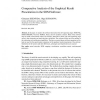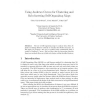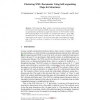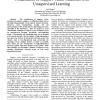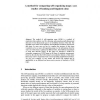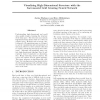0
posts
with
0
views
0
views
 Homepage
Homepage INFORMATICALT
2002
14 years 5 months ago
2002
In the paper, we analyze the software that realizes the self-organizing maps: SOM-PAK, SOM-TOOLBOX, Viscovery SOMine, Nenet, and two academic systems. Most of the software may be f...
DATAMINE
2010
14 years 5 months ago
2010
Abstract Weighted Voting Superposition (WeVoS) is a novel summarization algorithm for the results of an ensemble of Self-Organizing Maps. Its principal aim is to achieve the lowest...
ESANN
2004
14 years 7 months ago
2004
In this tutorial paper about neural maps we review the current state in theoretical aspects like mathematical treatment of convergence, ordering and topography, magnification and o...
ESANN
2004
14 years 7 months ago
2004
Abstract. The use of self-organizing maps to analyze data often depends on finding effective methods to visualize the SOM's structure. In this paper we propose a new way to pe...
INEX
2005
Springer
14 years 11 months ago
2005
Springer
Self-Organizing Maps capable of encoding structured information will be used for the clustering of XML documents. Documents formatted in XML are appropriately represented as graph ...
CIBCB
2006
IEEE
14 years 11 months ago
2006
IEEE
– The visualization of support vector machines in realistic settings is a difficult problem due to the high dimensionality of the typical datasets involved. However, such visuali...
ADBIS
2007
Springer
14 years 12 months ago
2007
Springer
The method of self-organizing maps (SOM) is a method of exploratory data analysis used for clustering and projecting multi-dimensional data into a lower-dimensional space to reveal...
IFGIS
2009
Springer
15 years 9 days ago
2009
Springer
Self-Organizing Maps (SOMs), or Kohonen networks, are widely used neural network architecture. This paper starts with a brief overview of how SOMs can be used in different types of...
ICML
1995
IEEE
15 years 6 months ago
1995
IEEE
Understanding high-dimensional real world data usually requires learning the structure of the data space. The structure maycontain high-dimensional clusters that are related in co...

